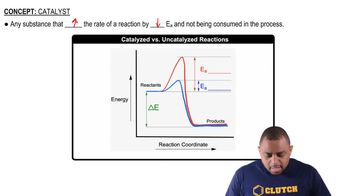Here are the essential concepts you must grasp in order to answer the question correctly.
Half-Life
Half-life is the time required for half of a reactant to be converted into products in a chemical reaction. In the context of first-order reactions, the half-life is constant and independent of the initial concentration of the reactant. Understanding half-life is crucial for comparing the rates of reactions, such as the natural degradation of peptide bonds versus enzymatic hydrolysis.
Recommended video:
First-Order Reactions
First-order reactions are those where the rate of reaction is directly proportional to the concentration of one reactant. The rate constant (k) can be determined from the half-life, which is given by the equation t1/2 = 0.693/k. This relationship allows us to calculate how quickly a reaction occurs and is essential for determining the effect of an enzyme on the reaction rate.
Recommended video:
Enzyme Catalysis
Enzymes are biological catalysts that significantly increase the rate of chemical reactions by lowering the activation energy required for the reaction to proceed. In the case of peptide bond hydrolysis, the enzyme accelerates the reaction from a half-life of 500 years to just 0.010 seconds, demonstrating the dramatic effect enzymes have on reaction kinetics and the importance of understanding their role in biochemical processes.
Recommended video:
Catalyzed vs. Uncatalyzed Reactions




